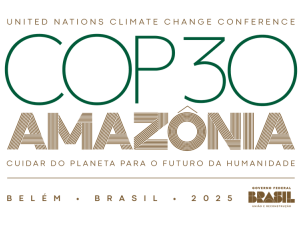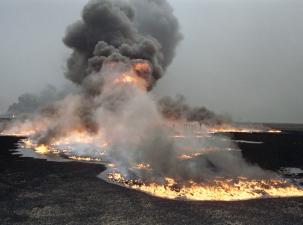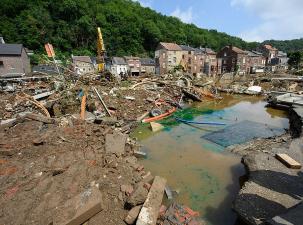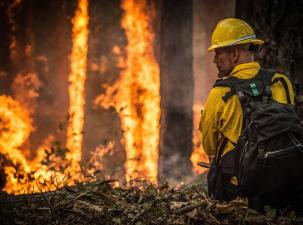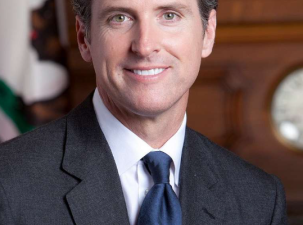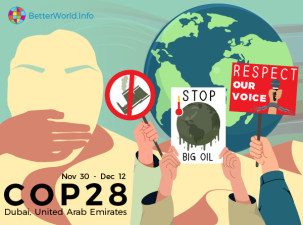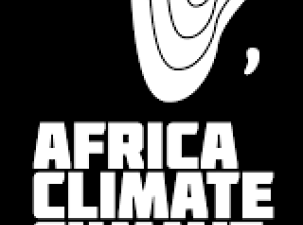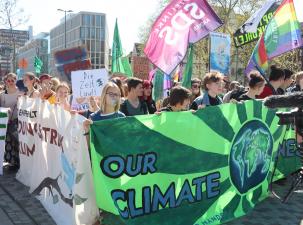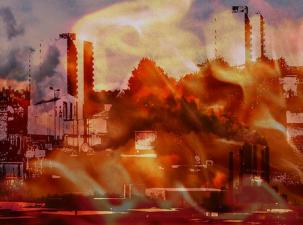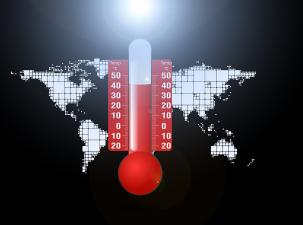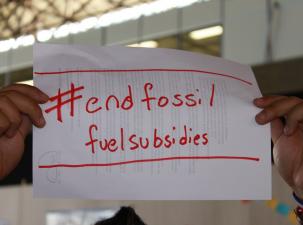Climate Crisis

➡️ The Climate Crisis - Causes, Consequences, and Solutions
Our changing climate has become one of the biggest global threats to peace, health, human rights, and our environment.
Climate change warnings began over 50 years ago. Scientists revealed how rising carbon dioxide levels in our atmosphere would impact our climate systems and contribute to raising temperatures.
Jump straight to our resources on ➡️ The Climate Crisis with 22,000 links
Explore our comprehensive guides on -
-
Climate Change News
-
Climate Change Causes
-
Climate Change Consequences
-
Climate Change Solutions
-
Fossil Fuel Companies, Key Players, and Climate NGOs
-
UN Climate Change Conferences (COP)
Since the Industrial Revolution, global economies have been built around the fossil fuel industry. The ongoing profits are in the trillions. Despite all the devastating signals, we are still failing to meet almost every target set to curb emissions.
Two-thirds of extreme weather events in the last 20 years were influenced by humans. Wildlife populations are plummeting, diseases are spreading faster, polar ice is melting, heat records are being broken year after year, and depleted resources are increasing violent conflict. Annually, 21.5 million people become climate refugees.
‘Once we start to act, hope is everywhere. So instead of looking for hope, look for action. Then, and only then, hope will come.’ - Greta Thunberg
German speakers should check out our partner site, Bessere Welt Info and the comprehensive guide to the Klima Krise with 7,500 links.
Make sure to follow our X/Twitter lists on climate NGOs, journalists, activists, politicians, scientists, sustainability, and the environment.

According to the WMO, we already crossed the 1.5-degree limit in 2024. Just half a degree more, and the effects on poverty, temperatures, sea level, biodiversity loss, and drought will be significantly worse.
One of the worst revelations was that many of these gas and oil giants knew! As early as 1977, internal researchers from Exxon made shockingly accurate predictions that confirmed the relationship between carbon emissions and rising temperatures. They publicly downplayed the risks for decades, pushing climate change denial and clever greenwashing campaigns.
Learn all about climate targets such as 350 PPM safe carbon dioxide levels, the 2°C climate goal, and other important climate tipping points. Dive deep into the complex world of climate ethics, debt and injustice. Here, we demonstrate how human rights are being impacted by climate change and how it deepens inequality.

What are the Causes of Climate Change?
Many factors have contributed to our changing climate – all man-made. The primary cause is increased atmospheric carbon dioxide due to fossil fuel energy production. Pre-industrial revolution CO2 levels were around 280 PPM. This was the case for 6,000 years. The levels today are 50% higher at 420 PPM. The fossil fuel industry is responsible for 75% of global greenhouse gas emissions and nearly 90% of all carbon dioxide emissions.
Intensive agriculture and Big Meat are responsible for approximately 29% of global carbon emissions and are the leading motive for land clearance. Beef alone is responsible for 41% of global deforestation. Heavy fertilizers, pesticide use, and mono-crops are causing a biodiversity crisis, and unsustainable practices have caused irreversible soil erosion and depletion.
Industry and manufacturing are the third biggest contributors to climate change. The production of clothing, plastics, electronics, iron, steel, cement, food processing, construction, and other industrial processes driven by overconsumption, capitalism, greed, and rapid urbanization are responsible for 21% of global greenhouse gas emissions.
Deforestation contributes 10-15% of global greenhouse gas emissions. Large-scale clearing of trees for livestock grazing, crops, logging, mining, and roads is stripping us of our best natural defence against climate change. Deforestation leads to the release of 4.8 billion tonnes of carbon every year. Scientists have known the value of trees as carbon sponges for decades, yet we continue to destroy around 10 million hectares of forest every year. Deforestation and land degradation rates are so bad that some tropical forests now emit more carbon than they capture.
Transport accounts for 14% of greenhouse gas pollution, including emissions from road vehicles, aviation, shipping, and rail. The vast majority (95%) of the world's transport energy still comes from fossil fuels. Almost 50% of countries report transport as their largest source of energy-related emissions, and there are little signs of this slowing. Between 2000-2019, CO2 emissions from transport rose in all regions except Europe. Asia holds the top place as the largest emitter.
The military, weapons manufacturing, the arms trade, and conflict are responsible for approximately 5% of greenhouse gas emissions. The year 2024 saw unprecedented spending on military budgets - a staggering $2.46 trillion. In the same year, a record number of 59 armed conflicts were recorded.

What are the Consequences of Climate Change?
As the climate crisis worsens, we are experiencing more frequent and unpredictable extreme weather events. WHO has declared it the single biggest health threat facing humanity. Devastatingly, those affected first and most severely are the nations and communities contributing the least to its causes. Developing countries which support higher populations of low-income and disadvantaged people are on the frontlines of climate change and are the least able to protect themselves.
Hurricanes and large-scale flooding events, such as the recent flooding in Pakistan, are deadly. They destroy livelihoods, crops, and clean water supplies, make sanitation impossible, and spread diseases.
Exacerbating the problem are rising sea levels resulting from melting ice sheets and glaciers and the expansion of water as the temperature increases. It seems we are hitting new temperature records every year. In the U.S., heatwaves are now the deadliest natural disaster. The Earth's global average surface temperature between 2015–2022 marked the eight warmest years on record.
With increasing temperatures and drier conditions, wildfire seasons are becoming longer, more widespread, and more destructive. Since the year 2000, an average of 70,000 wildfires have burned each year in the U.S. - double the average in the 1990s. This equates to an enormous 7 million acres lost annually (roughly the size of Albania).

Droughts and the resulting impact on agriculture are causing hunger, poverty, food insecurity, and high food prices. With more than 40% of the world's population relying on agriculture as their main source of income, it is unsurprising that drought is the consequence of climate change most people are worried about.
As whole regions become unliveable, people are forced to leave their homes in search of safety, improved quality of life, and financial prospects. Since 2008, 21.5 million climate refugees have been displaced annually by weather-related events.
The majority of these climate migrants come from rural areas where the economy is based on the vulnerable agriculture sector. Climate change is now multiplying the threat of conflict in these at-risk areas as instability rises. Resource competition and food and water scarcity are indirectly driving wars.
If human and environmental costs aren't enough to prompt leaders to take action, the eye-watering financial cost of climate change definitely should! The NOAA recently revealed that 310 climate-related disasters since 1980 have cost the U.S. more than $2 trillion!
Shocking estimates calculate the global economy's cost of unchecked climate change to be $178 trillion by 2070.

What are the Solutions to Climate Change?
Meaningful long-term climate action is very much a now-or-never situation. A 2022 report by the IPCC revealed that ‘without immediate and deep emissions reductions across all sectors, limiting global warming to 1.5°C is beyond reach.’
Greenhouse gas emissions reached the highest levels in history between 2010-2019, but the growth rate has since slowed. Renewable energy costs are falling. New policies and laws have increased energy efficiency, and levels of deforestation have stabilised. There are reasons for hope, and we already have the necessary tools and knowledge. The worst could be avoided if governments and world leaders step up and enforce large-scale implementation.
We simply must end our reliance on coal and fossil fuels. This includes removing the enormous governmental subsidies propping up the industry and encouraging massive divestment from banks and universities. The IMF estimates that fossil fuels currently account for 85% of all global subsidies, massively hampering the renewable energy sector.
To keep fossil fuels in the ground, we must fund reliable, affordable, and clean alternatives. Wind, solar, wave, and hydroelectricity offer excellent renewable energy options.
Strictly regulated climate policy is essential to ensure that targets are adhered to. A landmark study which evaluated 1,500 climate policy measures around the world discovered that an alarming 96% of climate policies since 1998 have failed. Success always relied on the use of tax or price incentives. A study by the IMF estimated that pricing fossil fuels would lower global carbon emissions by 28%. The polluter pays principle ensures that the burden of climate damages falls on those most responsible for it.

Electrification of our transport systems, de-intensifying agriculture, large-scale reforestation schemes, rewilding, waste reduction, climate adaptation and resilience, and public awareness and education are all proven solutions that we already have the skills and knowledge to implement on a global scale.
High-tech solutions to the climate crisis include carbon capture and nuclear power, both controversial options. Carbon capture itself is extremely energy intensive, and issues with radioactive waste and the potential for nuclear accidents are too risky to ignore.
Carbon offsetting aims to mitigate the climate crisis through the purchasing of offsets which remove carbon from the atmosphere. Offsets can be bought when emissions exceed targets, and carbon is removed from the atmosphere somewhere else, allowing polluters to keep polluting.
Offsets are a distraction from real climate action. It does not tackle the root cause of climate emissions, and instead, this money could be channelled into renewable energy and nature-based solutions.
The increasing success of climate lawsuits means that destructive industries and governments no longer enjoy impunity for their actions. Trials against polluters and inept governments give vulnerable communities a voice, and the threat of legal action and financial risk create a deterrent which forces them to implement positive changes.

Who are the Key Players in Climate Change?
Lack of governmental action has forced citizens to take matters into their own hands. Climate NGOs and divestment and fossil-free campaigns organise protests, raise awareness, and put public pressure on governments, industry, and banks to act. Fridays For Future, Extinction Rebellion, and Just Stop Oil promote collective action and keep climate issues in the headlines.
Find essential information on peaceful, nonviolent action, climate camps, online campaigning, and a huge guide of tools and resources for activists and changemakers.
Climate scientists and institutes also play an important role in the climate movement. Through research and studies, they disseminate reliable climate knowledge and fight against greenwashing, climate denial, and the spread of misinformation.
As for the bad guys, find detailed information on fossil fuel companies that have known about the negative impacts of carbon emissions for decades. With their vast financial clout and influence, they fund climate science denial, initiate new destructive projects, and lobby governments. Not only do they continue to generate enormous profits and enjoy impunity, but they also block climate progress.

What are the UN Climate Change Conferences? (COP)
COP Conferences are annual global climate summits designed to review progress made by members in limiting climate change. They review emissions inventories, ensure that all parties are represented equally, and after lengthy negotiations and debates, they set agreed-upon targets for all members.
Thirty years have passed since the first COP took place, and in that time, the climate crisis has become a global priority. COP21 was hailed as a significant turning point when the Paris Agreement, a legally binding international treaty on climate change, was adopted by 196 parties. Unfortunately, since then, many scientists, activists, and climate experts have labelled the conference's 'talking shops', which fail to produce meaningful action as most countries continue to fall short of their climate goals.
COP28, which was held in Dubai in 2023, was chaired by oil tycoon Sultan Al Jaber in a country marred with human rights abuses and repression. It did, however, result in the first-ever Global Stocktake, an evaluation of where the world stands in regard to meeting Paris Agreement goals. Set to take place every five years, the assessment should help policymakers and stakeholders to observe gaps where progress is seriously lacking and reinforce climate policies.
The long-awaited loss and damage fund was also operationalised on the first day of the talks in what could have been a major breakthrough for developing countries on the frontline of climate change. Financial commitments, however, have fallen well below the $400 billion needed annually to address climate injustices sufficiently.
COP29 in Azerbaijan, a major natural gas and oil producer, was criticised from the start and ended in disappointment for developing nations as funding remained insufficient. COP30 in Brazil at the end of 2025 has already sparked controversy with the building of a new highway cutting through the Amazon rainforest, and the selection of Dan Ioschpe, an auto industry executive, to lead the talks.
Many NGOs and activists now boycott the events due to inappropriate sponsors, leadership, and the heavy influence of fossil fuel lobbyists.

The Energy Transition for a Better World
The devastating impacts of climate change that we are witnessing in every corner of the globe are a reminder of the threat that climate change poses and our warning that we are very close to irreversible damage and climate catastrophe. Crossing that tipping point means we can no longer leave our children a world worth living for.
The Institute for Economics & Peace predicts that by 2050, there will be 1.2 billion climate refugees, untold suffering, death, and a financial toll of $178 trillion.
We must act now!
The greed of multi-national corporations, the super-rich, and corrupt politicians must end.
Better World Info's climate change platform is a wonderful tool for networking and provides a bounty of excellent free information and resources. We help raise awareness, counter misinformation, and fight climate change denial.
Better World Info is an open platform – We invite experts, NGOs, campaigners, and activists to contribute their knowledge and top resources! We are a constantly expanding, work-in-progress, committed to spreading reliable, critical, and investigative resources to help create an informed, knowledgeable, and curious world.
Author: Rachael Mellor, 24.01.23 (Updated 03.04.25) licensed under CC BY-SA 4.0
For further reading on the Climate Crisis see below ⬇️
Info on Climate Crisis
- Climate News[569]
- General Climate Info[1768]
- Causes of Climate Crisis[966]
- Climate Solutions[2906]
- Consequences[6067]
- The Players & NGOs[5562]
- Movements & Campaigning[388]
- Climate Camps & Actions[298]
- COP Conferences[4137]
Hot Topics
Twitter list
Tweets by @BetterWorldInfo/lists/climatechange
Hero of the Month
David Attenborough
Sir David Attenborough is the people's voice in the UNFCC and has also briefed the British government. He mentioned that government "can not be radical enough" on climate action and said that he feels society is going through a new transition on its views of morality, as it did with slavery, this time on climate change. That the question for the government, is how do they take the electorate with them? He highlights that every time we breathe we are dependant on nature and that never before have we been so powerful that we can crush nature without even realising it.

Featured Organisation of the Month
The Climate Reality Project
The non-profit organization was formed in 2006 by the American politician and environmentalist Al Gore. The Climate Reality Project is specialized on education on climate change, campaigns against climate change denial and building a global climate protection movement. In recent years it has attracted attention through numerous campaigns such as the I AM PRO SNOW campaign to draw attention to snow as a basis for leisure and work or the 24 Hours of Reality campaign with a focus on a specific region of the world.

